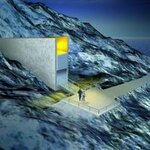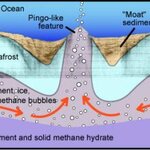Oceanography

Since the beginning of the industrial age the ocean has absorbed about half of all anthropic(1) carbon dioxide (CO2) emissions into the atmosphere. This has led to an acidification of sea water. Frédéric Gazeau, a scientist at the Netherlands Institute of Ecology, and his colleagues, including Jean-Pierre Gattuso, Director of Research at the Oceanographic laboratory at Villefranche-sur-Mer (CNRS/Université Pierre et Marie Curie) have examined the reaction of oysters and mussels cultivated in Europe to this acidification of the oceans. The results, published in the review Geophysical Research…

Scientists have identified four Antarctic glaciers that pose a threat to future sea levels using satellite observations, according to a study published in the journal Science.
Experts from the University of Edinburgh and University College London determined the effect that Antarctica and Greenland were having on global sea level in a comprehensive evaluation of the Earth’s ice sheets. They found that together these two ice-sheets were responsible for a sea level rise of 0.35 millimetres per year over the past decade – representing about 12 per cent of the current global trend.
However,…

More than three-quarters of the particulate pollution known as black carbon transported at high altitudes over the West Coast during spring is from Asian sources, according to a research team led by Professor V. Ramanathan at Scripps Institution of Oceanography, UC San Diego.
Though the transported black carbon, most of which is soot, is an extremely small component of air pollution at land surface levels, the phenomenon has a significant heating effect on the atmosphere at altitudes above two kilometers (6,562 feet).
As the soot heats the atmosphere, however, it also dims the surface of…

The buildup of greenhouse gases in Earth’s atmosphere and oceans continues to provoke changes in the natural environment that scientists have been working to measure for decades. Global increases in temperature are just one facet of a much larger issue that scientists at the Rosenstiel School of Marine and Atmospheric Science are dedicated to uncovering. "The Marine Inorganic Carbon Cycle," a paper recently published in the journal Chemical Reviews, attempts to quantify over 60 years of research, reviewing a vast array of science that brings into question the Earth’s natural ability to…

While humans can survive large temperature fluctuations, such species as corals are only comfortable within a 12-degree temperature range. And rising global temperatures appear to be threatening their survival, according to Drew Harvell, Cornell professor of ecology and evolutionary biology.
However, she noted in presenting a paper at the annual meeting of the American Association for the Advancement of Science in San Francisco, Feb. 18, Caribbean gorgonian sea fan corals show surprising warm-weather tenacity -- they not only are somewhat temperature resilient but can also boost their…

Using a variety of new approaches, scientists at Scripps Institution of Oceanography at UC San Diego are forging a new understanding of the largest mammals on Earth.
In one recently published study on blue whales, Scripps researchers used a combination of techniques to show for the first time that blue whale calls can be tied to specific behavior and gender classifications. In a separate study, researchers used recordings of blue whale songs to determine the animal's population distributions worldwide.
While the specific function of songs and calls produced by whales remains a mystery to a…

The Norwegian government has revealed the architectural design for the Svalbard International Seed Vault, to be carved deep into frozen rock on an island not far from the North Pole. The entrance to the "fail-safe" seed vault will "gleam like a gem in the midnight sun," signaling a priceless treasure within: seed samples of nearly every food crop of every country. The vault is designed to protect the agricultural heritage of humankind -- the seeds essential to agriculture of every nation.
Artist's impression of the Svalbard Global Seed Vault. (Image courtesy of Global Crop Diversity Trust…

According to a recent paper published by MBARI geologists and their colleagues, methane gas bubbling through seafloor sediments has created hundreds of low hills on the floor of the Arctic Ocean. These enigmatic features, which can grow up to 40 meters (130 feet) tall and several hundred meters across, have puzzled scientists ever since they were first discovered in the 1940s.
This conceptual drawing (not to scale) shows Paull's hypothesis that methane gas from deep hydrate deposits could push sediment up from below the ocean bottom to create a pingo-like feature. The gray lines in the…

The climate system, and in particular sea level, may be responding more quickly to rising carbon emissions than climate scientists have estimated with climate models.
An international team of climate scientists has cautioned against suggestions that the Intergovernmental Panel on Climate Change (IPCC) has previously overestimated the rate of climate change.
The team, from six institutions around the world, reviewed actual observations of carbon dioxide, temperature and sea level from 1990 to 2006 and compared them with projected changes for the same period.
CSIRO Marine and Atmospheric…

By absorbing half of the carbon dioxide emitted into the atmosphere, the oceans have a profound influence on climate. However, their ability to take up this carbon dioxide might be impaired as a result of climate change. To determine their response to global warming, ESA has backed two projects that provide systematic data on key oceanic variables – colour and temperature.
Plankton bloom off the coast of Norway, acquired on 10 June 2006 by Envisat's MERIS - an instrument optimised to detect ocean colour. (Image courtesy of European Space Agency)
The Medspiration project, aimed at charting…